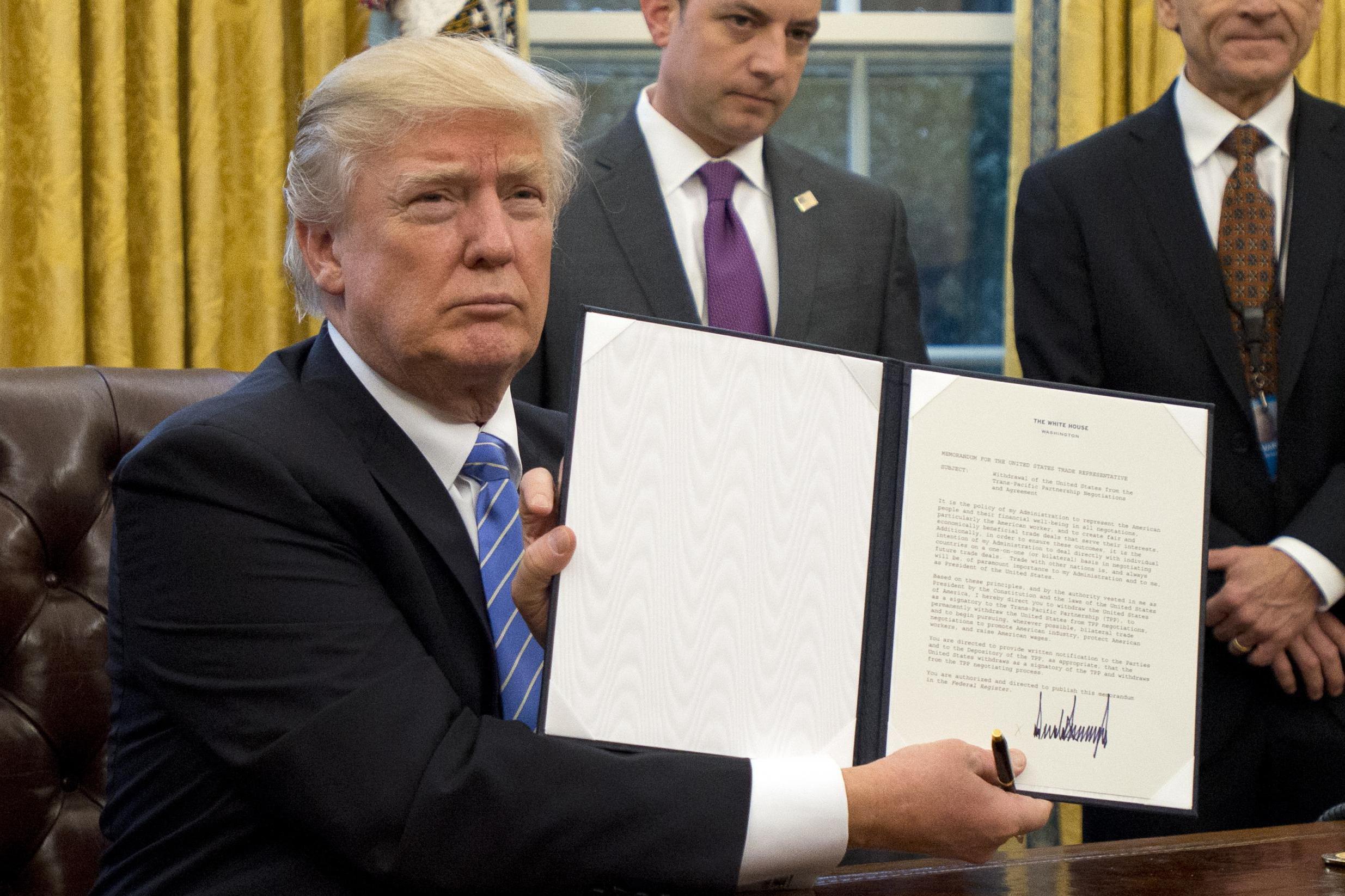Presidential executive orders: What are they? How can they be repealed? Where are the limits?
With Donald Trump’s directives it is more that tone that has been the issue, rather than the number issued

Your support helps us to tell the story
From reproductive rights to climate change to Big Tech, The Independent is on the ground when the story is developing. Whether it's investigating the financials of Elon Musk's pro-Trump PAC or producing our latest documentary, 'The A Word', which shines a light on the American women fighting for reproductive rights, we know how important it is to parse out the facts from the messaging.
At such a critical moment in US history, we need reporters on the ground. Your donation allows us to keep sending journalists to speak to both sides of the story.
The Independent is trusted by Americans across the entire political spectrum. And unlike many other quality news outlets, we choose not to lock Americans out of our reporting and analysis with paywalls. We believe quality journalism should be available to everyone, paid for by those who can afford it.
Your support makes all the difference.Donald Trump has come under fire for a number of his executive orders during the first days of his presidency, so here is an explainer on what the orders are and whether what President Trump is doing is unusual.
What is an executive order?
In simple terms, an executive order is an official statement by the President, ordering the federal agencies under he oversees how to direct their resources.
An executive order is part of a wider range of directives called executive actions. An order is the most formal action – which derive their power from Artcile II of the Constitution. Other actions include presidential memorandums and then proclamations and directives.
The Executive orders are numbered and must be published in the Federal Register, the government’s daily compendium of regulations and official actions. Presidential memoranda are a step down and are explanatory documents that offer guidance to the administration’s position on an issue, or deal with the internal workings of the administration.
Executive orders are considered binding, but can be subject to legal review (see below).
So this is the US president setting out a new law?
No. An executive order is not allowed to be used to create a new law or appropriate funds from the US Treasury. Orders merely allow the president to instruct the government how to act within the confines that have been set down by the Constitution and the US Congress. For example, Donald Trump’s executive order on a border wall with Mexico called on the Department of Homeland Security to use elements of already-available funds in order to begin construction.
Can they be challenged?
Yes. Firstly, if Congress – or usually the party with a majority across one or both Houses – objects to an order it can rewrite or amend previous legislation, or subject new legislation to overrule the order. A two-thirds majority across Congress is normally required. Secondly, as the use of executive orders is regulated by the Constitution, orders can be challenged in the courts – with cases often making their way all the way up to the Supreme Court.
One example of an order being overruled by the Supreme Court was in 1952, when President Harry Truman seized the nation’s steel mills, fearing a possible steel strike during the Korean War. The steel companies sued and the order was ruled unconstitutional.
Why are they so controversial?
This issue strikes at the heart of the interaction between the three branches of the US government: the Legislative (US Congress), who make the laws; the Executive (the President, Vice President, Cabinet etc) who carry out the laws and the Judicial (Supreme and Federal courts) which evaluate the laws. Presidents have to be careful with wording of executive orders, with opposition parties often accusing them of overstepping their authority and changing the law instead of working within it. Using too many orders also looks like a president is unable to get their agenda passed through Congress, while getting struck down by the courts is embarrassing.
How do Trump’s executive orders measure up?
It is actually not unusual for presidents to use a number of executive orders in the opening days of their term. Incoming presidents want to cultivate an image of strength while also ensuring they can start their administration with a number of quick measures – whether just symbolic or substantive.
Back in 2009 Barack Obama signed nine executive orders in his first 10 days and 16 in total between January and February. In his first seven days Mr Trump signed six – with more in the days since.
With Mr Trump’s directives it is more the tone that has been the issue – and this is subjective.
Mr Trump's executive orders – such as the immigration ban, the border wall, sanctuary cities, beginning the repeal of Obamacare and expediting the Keystone XL pipeline — have upset Democrats who disagree with those policies. However, whether any one of them can be ruled to overstep Mr Trump’s authority or be against the Constitution is a debate that will play out in the coming months.
Join our commenting forum
Join thought-provoking conversations, follow other Independent readers and see their replies
Comments